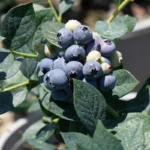Reasonable Price
We offer reasonable price
Original price was: $45.99.$21.99Current price is: $21.99.
Grow your own delicious fruit with a Purple Passion Fruit Vine! This perennial vine thrives in zones 9-11, needing full sun and well-drained soil. Enjoy fragrant blooms and sweet-tart fruit.
Jul 12
Jul 17 - Jul 19
Jul 22 - Jul 26
We offer reasonable price

Contact us 24 hrs a day

You've 30 days to Return

100% secure payment
| Product |  |  |  |  |  |
|---|---|---|---|---|---|
| Name | Muscadine Grape Plant Live Vitis Rotundifolia Carlos Sweet Edible Vine | Caroline Red Raspberry Plant – Everbearing – 4 inch Pot – Spring Planting | Blueberry Bush Live Plant – 1 Gallon Potted Sweet Blueberry Seedlings | Red Raspberry Plant Bare Root 3 Pack – Easy To Grow | Granadilla Vine – 2ft Tall Giant Passion Fruit Vine – 1 Gallon – Not Ship CA |
| USDA Hardiness Zone | - | - | 3-10 | - | - |
| Soil Type | - | - | Well-drained | - | - |
| Sunlight Exposure | - | - | Ideally 6-8 hours of direct sunlight daily | - | - |
| Expected Planting Period | - | - | Fall, early Spring | - | - |
Sold 0 products
Original price was: $61.99.$44.99Current price is: $44.99.Sold 0 products
Original price was: $65.99.$50.99Current price is: $50.99.Flower Bulbs
Pink Spider Lily Bareroot Bulbs – 2 Pack Surprise Lily, Resurrection Lily, Naked Lady Lily
Sold 0 products
Original price was: $65.99.$44.99Current price is: $44.99.Sold 0 products
Original price was: $60.99.$36.99Current price is: $36.99.Sold 0 products
Original price was: $60.99.$41.99Current price is: $41.99.
Reviews
There are no reviews yet.